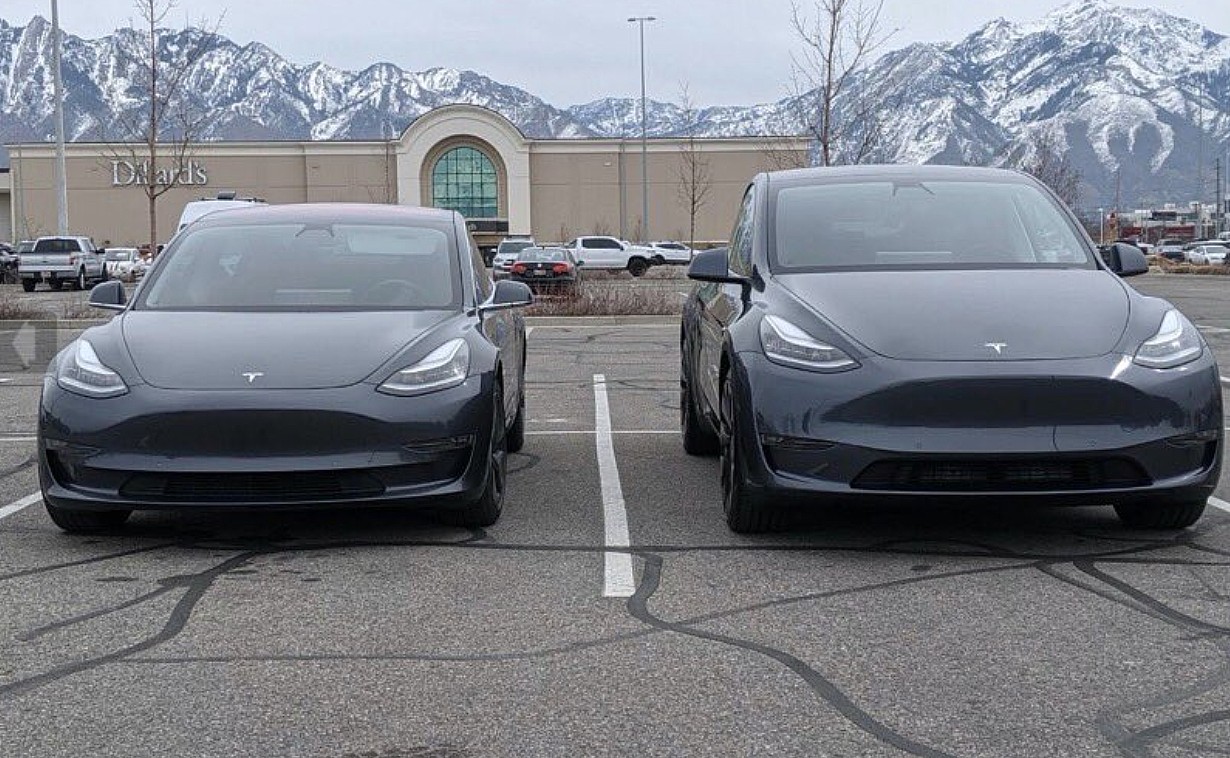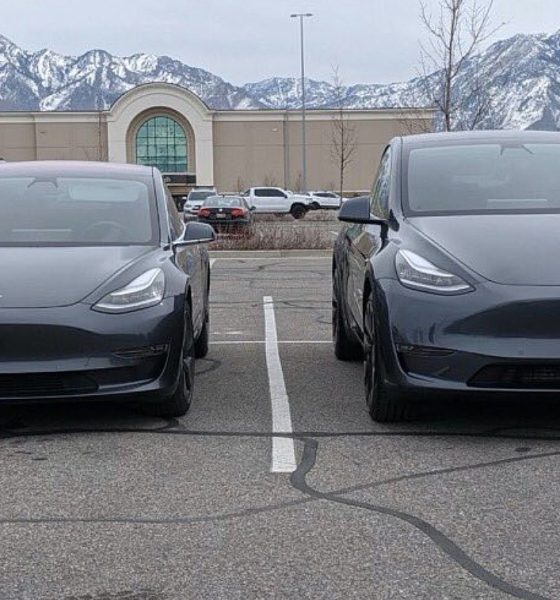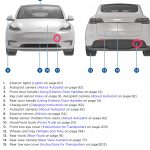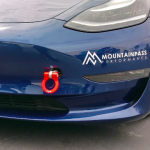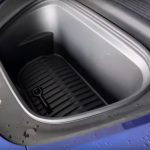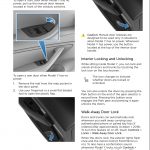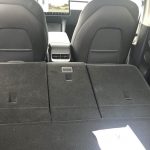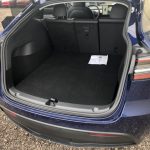The Tesla Model Y and Model 3 are both designed to cater to the mass market. Both vehicles share 75% of their parts since they’re optimized for quick production. But even vehicles that are three-quarters similar have key differences, some of which were revealed in the recently-released Tesla Model Y Owner’s Manual.
From their tow eye hooks to their speakers to their wheel configuration, the Model Y and Model 3 feature subtle differences that make them distinct from each other. Here are 12 of these key differences, as outlined by Tesla owner-enthusiast Tesla Raj in a recent video.
We’ve highlighted some of the key differentiators below.
Tow Eye Hook
Tesla has added a second tow eye hook to the back of the Model Y for added convenience when towing the vehicle from either end.
In times when a Tesla Model Y may need to be transported on a flatbed truck, the vehicle can be placed in Transport Mode and winched by way of a tow eye hook and onto the back of a flatbed truck while its wheels remain free-rolling.
Compared to the Tesla Model 3, which is equipped with a tow eye hook only in the front of the vehicle, Model Y has a cover on the right side of the rear bumper to conceal the second tow eye. This can be seen in the vehicle’s diagram in the Model Y Owner’s Manual.
- Tesla Model Y frunk tow eye (Credit: Ben Sullins)
Emergency Door Release Handles
The Tesla Model 3 met some criticism when it was produced with emergency release handles only available on the front doors. Tesla addressed the issue in Model Y by adding emergency release handles on all doors. The Model Y rear emergency release handle is located under a flap inside the bottom of the rear door pocket.
Emergency release handles are only required in situations where the vehicle does not have power. “In the unlikely situation that Model Y has no power, these electrically-powered buttons at the top of the door handles no longer work. However, the doors are equipped with mechanical releases so that you can still open them,” notes Tesla in its Model Y Owner’s Manual.
- Tesla Model Y emergency door release (Credit: Tesla)
- Tesla Model Y rear door emergency release (Source image: Eweaver1983271 via Reddit)
Trunk Space, Rear Seats, and Legroom
No surprises, but the trunk space for Model Y is drastically larger than that of the Model 3. Factoring in Model Y’s taller hatchback design versus Model 3’s traditional trunk and the difference in cargo space becomes obvious. Model Y boasts a massive 68 cubic feet of cargo volume compared to 15 cubic feet for Model 3.
The rear seats of the Model 3 and Model Y are also quite different in the way that the all-electric sedan’s fold 60/40. Model Y, on the other hand, has three seats, all of which could be folded down individually. The Model 3’s rear seats can also be folded down only through the rear, while the Model Y provides two ways to fold down its second-row seats and includes a center passthrough when the middle seat is folded down.
Model Y has two switches on the left side of the trunk that gives owners ease of access to the second-row seats directly from the trunk. Activating the switch will fold-down each corresponding rear seat.
The Model Y seats appear to be the same design as the Model 3, however, are mounted on risers for better legroom and overall comfort than Model 3. Rear seat legroom in the Model Y is improved over Model 3 by roughly 15%, although it looks like some of it was borrowed from the 2% reduction in front legroom when compared to Model 3. The headroom between Model Y and Model 3 is relatively the same and differ only by 1-2%.
Tesla Model Y vs Model 3 Leg Room
- Front: Model Y – 41.8 in (1,063 mm) vs Model 3 – 42.7 in. (1,085 mm)
- Rear: Model Y – 40.5 in (1,029) vs Model 3 – 35.2 in (894 mm)
- Tesla Model Y trunk (Credit: Eweaver1983271 via Reddit)
- Tesla Model Y rear seat fold down levers (Credit: Tesla)
- Tesla Model Y rear door emergency release (Source image: Eweaver1983271 via Reddit)
Wiring System and Heat Pump
Arguably the most notable difference between the Model Y and Model 3 in terms of core design improvement is the wiring system and heat management. Tesla added a heat pump to the Model Y, which could help the all-electric crossover maximize its range during winters. In addition and as pointed out by TeslaRaj in his video, the diagram for Model Y appears to show a single track for wiring as opposed to Model 3 which has two.
Teslarati will explore both of these points in detail in an upcoming story.
Wheel Size and Specifications
The Tesla Model Y’s wheels are 9.5 inches wide, which are slightly larger than the Model 3’s 8.5-inch wheels. It should be noted that the Model Y Performance comes with a staggered wheel setup, with the front wheels being 9.5 inches and the rear wheels being 10.5 inches wide.
See more: Tesla Model Y with Performance Upgrade Uberturbine Wheels
Rear Speakers
Both the Tesla Model 3 and the Tesla Model Y are fitted with a suite of premium speakers that provide a great listening experience for owners. They do have differences in the way that the Model 3’s rear speakers are located on a shelf behind the rear seats, while the Model Y has its rear speakers on the trunk hatch.
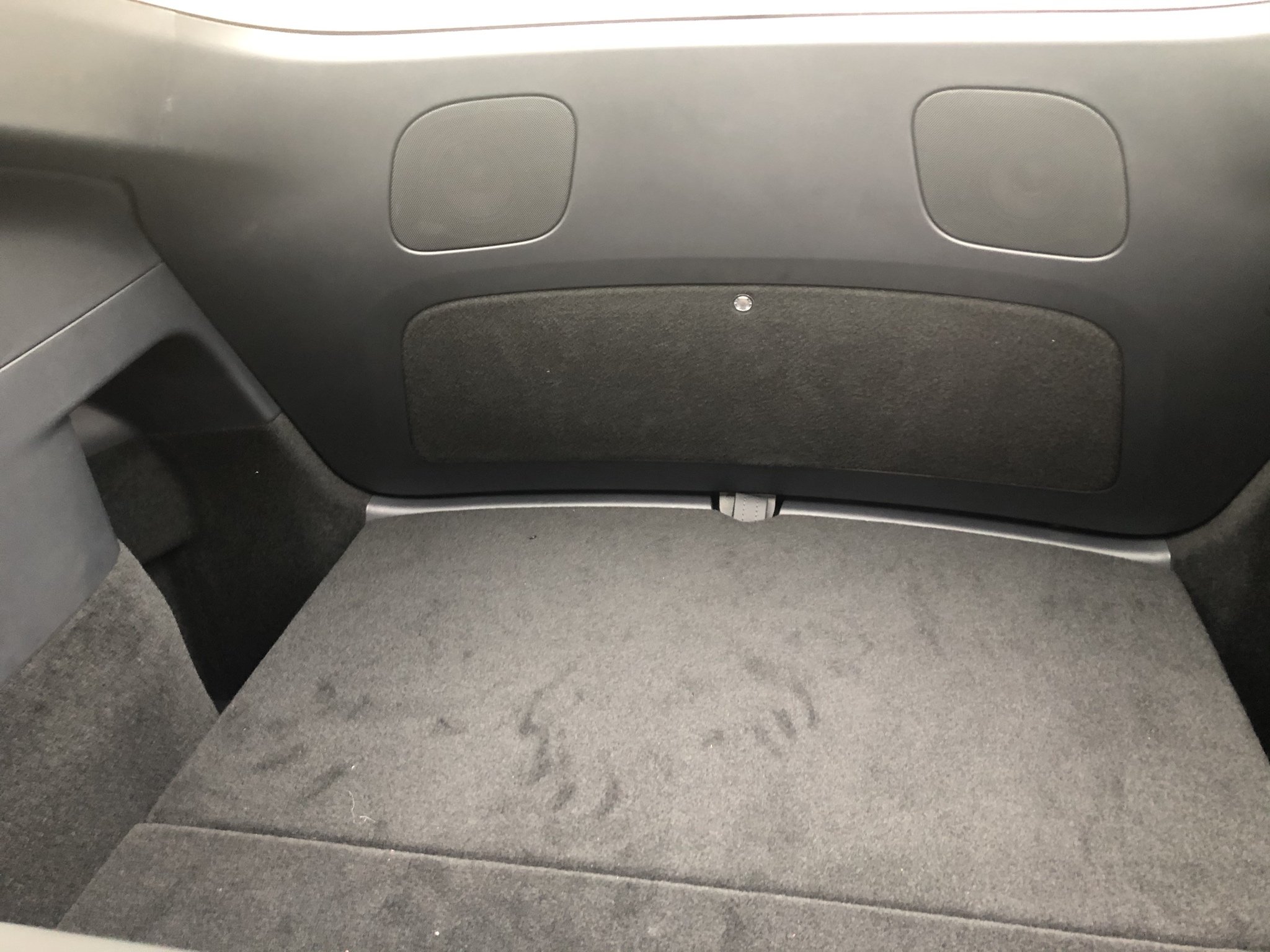
Coat Hooks
Both the Tesla Model 3 and the Model Y come with coat hangers, though the all-electric sedan’s is located on the crossbar that goes between the B pillars. The Model Y, with its seamless glass roof, has its coat hangers in the second row.
Inductive Phone Charger
The Tesla Model Y is equipped with a wireless charging pad, as well as USB-A and USB-C slots. On the other hand, the Model 3 is fitted with wired charging options and a dual USB-A slot. Owners would likely appreciate the Model Y’s wireless charging features, as most flagship and midrange mobile devices today come standard with wireless charging. See Tesla Model Y wireless phone charger.
Rear USB ports
The USB ports of the Model 3 and Model Y in the second row are also different. The Model 3 is fitted with two USB-A ports, while the Model Y is equipped with two USB-C ports. Considering that the two vehicles share 75% of their parts, it would not be surprising if Tesla ends up equipping the Model 3 with USB-C ports in the future.
Tesla notes in the Model Y Owner’s Manual that the rear USB ports are for charging devices and do not communicate with the vehicle like the front USB ports that can be used for recording via TeslaCam.
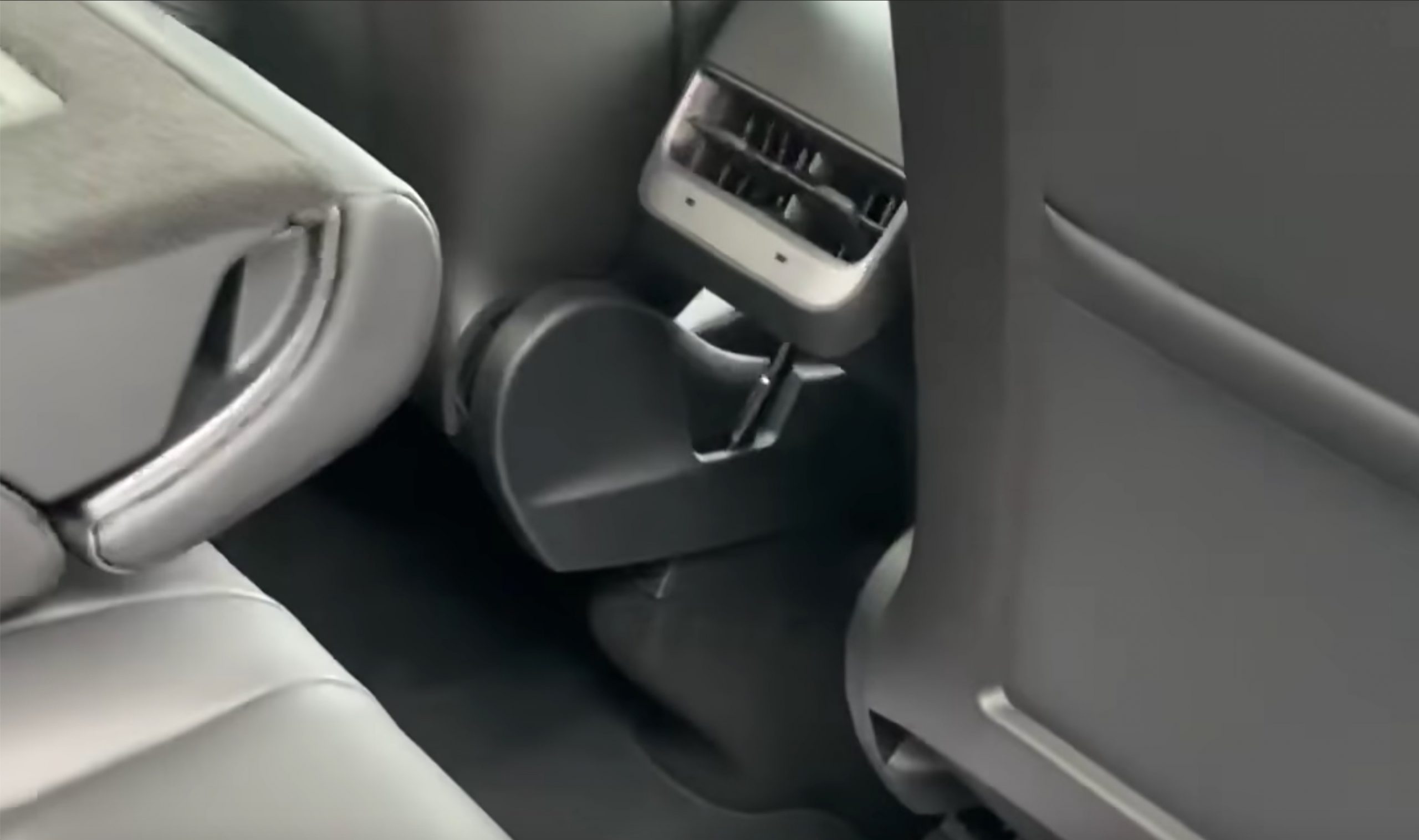
Power Liftgate
The Model Y is equipped with a power liftgate, which provides owners an automatic and convenient way to open and close the vehicle’s rear hatch by way of the center touchscreen or Tesla mobile app. This feature is not present in the Model 3, which is one of the reasons why aftermarket power truck mods became quite popular in the Tesla community.
See Tesla Model Y’s power liftgate in action.
A big thanks to Tesla Raj for compiling this info. Check out this video below.

News
Tesla launches hiring for Robotaxi program in its twentieth country
Overall, the hiring signals Tesla’s aggressive timeline for global dominance in autonomous mobility.

Tesla has launched a hiring initiative for its Robotaxi program in its twentieth country, as the company posted two new jobs in Thailand this week.
Tesla is hiring in Bangkok and Kowloon for the Vehicle Operator position, which is related to data collection, and is the first in Thailand, but the twentieth country overall, as the company tries to expand into other markets.
🚨 BREAKING: Tesla is hiring additional full-time Vehicle Operators in Bangkok, Thailand.
Previous openings were 6-month, part-time roles. These are equivalent to AI Safety Operator roles in the U.S. pic.twitter.com/R6LzoU1bos— Tesla Yoda (@teslayoda) January 5, 2026
Tesla has had active job postings for Vehicle Operator positions in the United States, India, Israel, Taiwan, Germany, the Czech Republic, Hungary, the UK, Finland, Switzerland, Sweden, the Netherlands, Austria, Spain, Norway, Italy, and Turkey in past listings.
These postings are not all currently available, likely because the roles have been filled.
Thailand is the most recent, and broadens the company’s potential path to expanding its ride-hailing program, which is only active in the United States in Austin, Texas, and the California Bay Area, so far.
These roles typically involve data collection, which assists in improving Autopilot and Full Self-Driving operation. Tesla’s self-driving programs utilize real-world data that is accumulated and stored, observing vehicle and traffic behavior, as well as tendencies that are performed by human drivers to help increase safety and overall performance.
Overall, the hiring signals Tesla’s aggressive timeline for global dominance in autonomous mobility. Although the company has several high-profile rivals and competitors in the field, it has established itself as a main player and a leader in the development of autonomous technology, especially in the U.S., as its FSD suite is refined on almost a weekly basis.
The Full Self-Driving suite is available in seven countries and territories currently, including the U.S., Canada, China, Mexico, Puerto Rico, Australia, and New Zealand. Its biggest goal for expansion is currently the European market, where regulatory hurdles have been the main bottleneck prolonging its launch on the continent.
Tesla has performed months of testing in various European countries, including France and Spain, and does have support in some areas from various regulatory agencies. However, the company is hoping to get through this red tape and offer its suite in Europe for the first time, hopefully this year.
News
Tesla China rolls out Model Y upgrades, launches low-interest financing
These strategies are aimed at improving the ownership experience and keeping vehicle pricing competitive in the world’s largest electric vehicle market.

Tesla has rolled out minor updates to the five-seat Model Y in China, upgrading the vehicle’s center display to a higher-resolution 16-inch 2K screen. The electric vehicle maker also introduced attractive financing options, including 7-year low-interest rates, to offset the new purchase tax on EVs.
These strategies are aimed at improving the ownership experience and keeping vehicle pricing competitive in the world’s largest electric vehicle market.
Five-seat Model Y gets larger, better display
With its recent update, all three variants of the five-seat Model Y now feature an upgraded 16-inch 2K resolution center display, which replaces the vehicle’s previous 15.4-inch 1080p panel. This screen was already used in the six-seat Model Y L, and it offered improved visual clarity. Tesla China has also updated the Model Y’s headliner to black, giving the vehicle a sleeker appearance.
Prices of the five-seat Model Y remain unchanged at RMB 263,500, RMB 288,500, and RMB 313,500 for the respective trims. This update enhances the cabin experience as domestic rivals are already adopting high-resolution screens. As noted in a CNEV Post report, some domestic automakers have begun rolling out vehicles equipped with 3K-resolution displays.
New financing offers
Tesla also launched ultra-long-term financing offers for its locally produced models in China, which include the Model 3 sedan, the five-seat Model Y, and the six-seat Model Y L, through January 31, 2026. The 7-year option features an annualized fee rate as low as 0.5%, which is equivalent to 0.98% interest. This is expected to save customers up to RMB 33,479 ($4,790) compared to standard rates.
A 5-year zero-interest plan is also available, and it has been extended to the Tesla Model Y L for the first time. These incentives help offset China’s new 5% purchase tax on New Energy Vehicles (NEVs) in 2026-2027. Some of Tesla’s rivals in China have announced in recent months that they would be covering the purchase tax owed by buyers early this year.
News
Tesla Model Y’s new feature lands driver in hot water from police officer
“He gave me a warning and told me to get it fixed.”
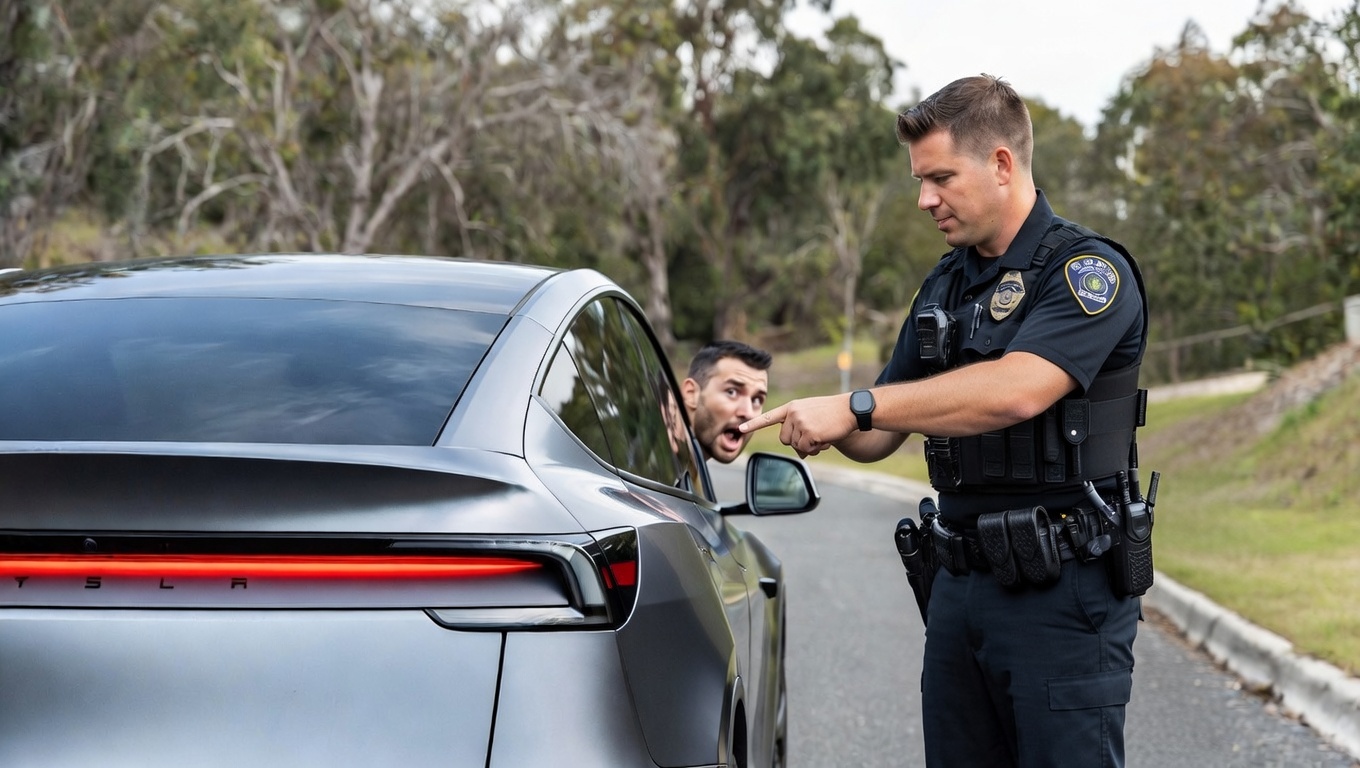
Tesla Model Y received a slew of both interior and exterior upgrades when the company refreshed its best-selling vehicle last year.
However, one of the more notable changes from an exterior perspective landed a driver in hot water with a local police officer, who was confused about the situation with the taillight bar and its ability to alert other drivers of a reduction in speed.

The new Tesla Model Y taillight with taillight glow
A Tesla Model Y owner in Indiana recently noted in a Facebook post that he was pulled over because a police officer thought the vehicle’s taillights were not turned on. However, the Model Y’s new rear light bar, which spans across the entire width of the vehicle, is more than visible in both light and dark conditions.
The incident, which was first spotted by Tesla Oracle, brings to light the interesting changes and perception of vehicle design that Tesla has brought forth with the new Model Y. We know some things might be head-scratching to some drivers, notably the Matrix Headlight technology present on the car, but this one truly baffled us.
The post stated:
“Just got pulled over for my tail lights not being “on” i told the officer it’s brand new. It has 1100 miles. I told him the red light bar is the taillight. The brake lights, both turn signals, and the red bar was on/worked. He told me that where the brake lights are, it should be illuminated there also. He gave me a warning and told me to get it fixed. Had anyone else had this kind of issue?”
Having the police officer tell a driver to “get it fixed” when it is a completely legal and functional design is pretty crazy.
However, the rear taillight bar, which glows and really gives the new Model Y a distinct difference between its previous iteration, is more than recognizable as a brake light and an indication of a reduction in speed.
Regulatory language for vehicle designs indicates that the light has to reach a certain number of lumens, or brightness. Lars Moravy indicated this on an episode of Jay Leno’s Garage when he and Tesla Chief Designer Franz von Holzhausen explained some of the details of the new Model Y.
This issue sparks some interesting dialogue people can have about vehicle design, and as more and more companies are adopting these futuristic looks, it seems law enforcement will have to get with the times and familiarize themselves with the regulations regarding exterior lights.
